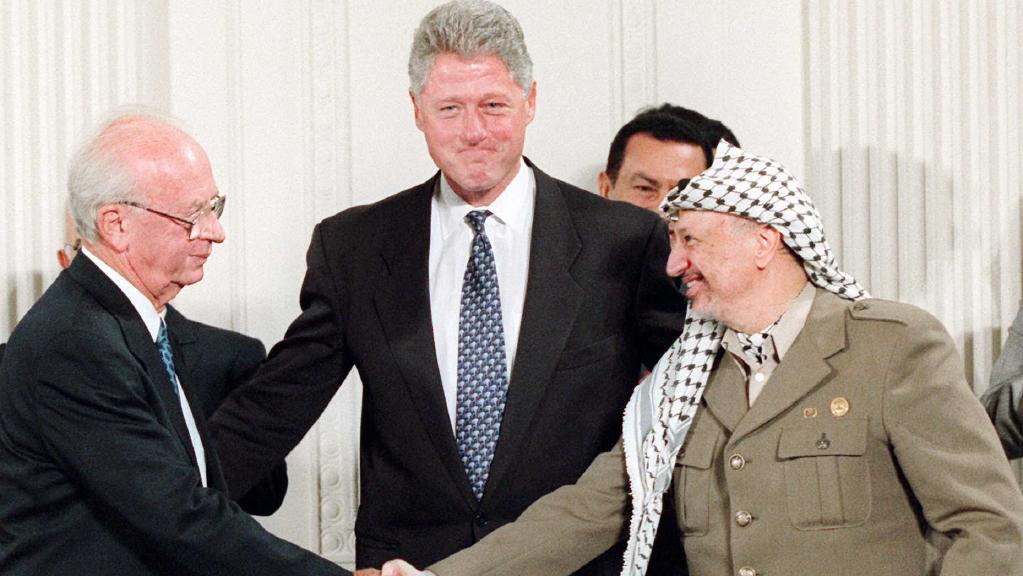Across the occupied West Bank, concrete checkpoints, separation walls and soldiers are reminders of the failure to build peace between Israelis and Palestinians since the historic Oslo Accords were signed 30 years ago this week.
The accord, intended as a temporary measure to build confidence and create space for a permanent peace agreement, has long since frozen into a system for managing a conflict with no apparent end in sight.
With the West Bank in turmoil, a nationalist government in Israel that dismisses any prospect of Palestinian statehood, and the Islamist movement Hamas flexing its muscles outside its home in Gaza, prospects for peace appear as distant as they ever have been.
Once the 87-year-old Palestinian President Mahmoud Abbas departs, a void will be left that may bring the crisis to a head.
“We are at the end of an era both in Palestine and Israel and probably in the region as a whole,” said Hanan Ashrawi, a civil activist and former spokesperson for the Palestinian delegation to the peace process in the 1990s.
“That whole generation – that era of talking about mutual recognition, two states, negotiated settlement, peaceful resolution – that’s coming to an end in Palestine,” she said.
Few on either side believe there is any realistic prospect of a two-state solution, with an independent Palestine existing side by side with Israel. The idea is now just a “convenient fiction” Ashrawi said.
Read the article by James MacKenzie in Sight Magazine.

